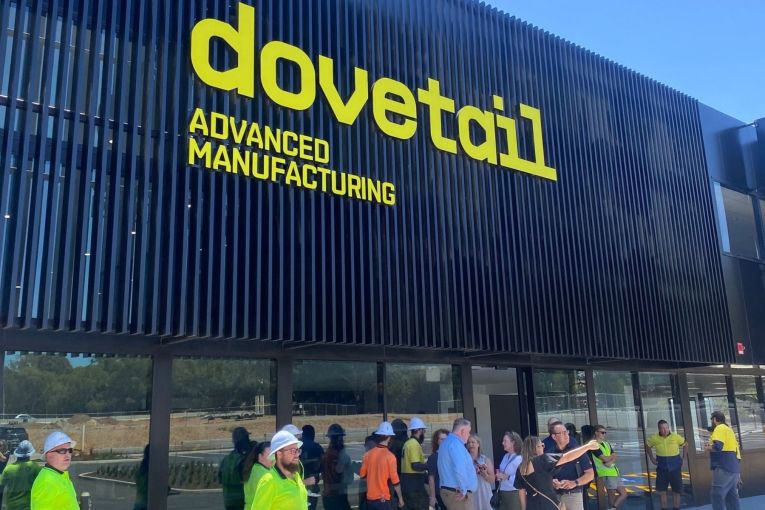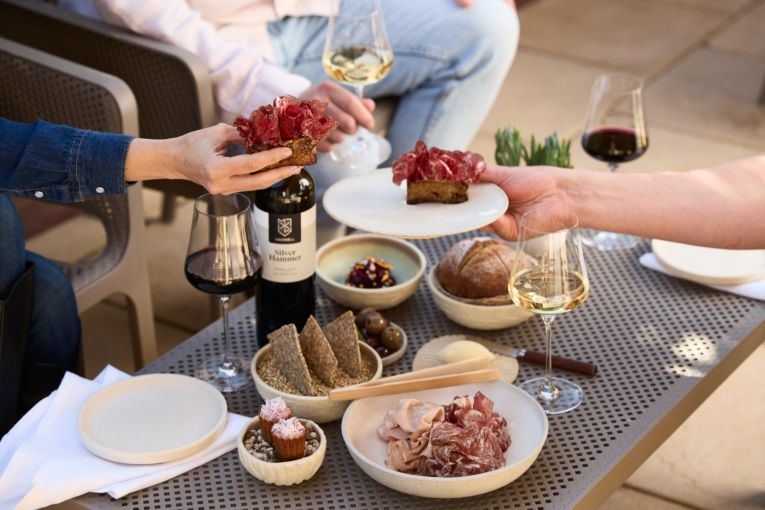Total govt health spend hits $9bn in Mullighan’s law and order budget
State government health spending shows no sign of slowing down in the Treasurer’s fourth budget defined by a focus on policing, as net debt is set to reach $48 billion by 2029, writes David Simmons.

Two smiling police officers grace the cover of Treasurer Stephen Mullighan’s fourth Budget Summary, in the place of last year’s welder and the year prior’s grinning young couple.
It speaks to the priority of the state government, which today revealed its “huge” investment into law and order.
The $172 million measure will increase the state’s police force to 5000 officers by 2030/31. It’s on top of $31 million for police infrastructure, $30 million for more police security officers and $12 million to ramp up recruitment programs.
Nearly $90 million more will go towards corrections, while just over $40 million will be funnelled into the justice system.
This tough-on-crime, police-heavy spend comes at Mullighan’s admission: “South Australia for several years has had the highest number of sworn police per capita of any state. This investment will make sure that South Australia retains that reputation.”
The Treasurer – also the Police Minister – told InDaily it was necessary because “the demands of policing in the current day are very different from what they’ve been in the past”.
“Increasingly, when they get tasked with responding to something out in the community, they might end up spending hours and hours dealing with somebody with a mental health issue… or responding to a family that’s just experienced domestic violence.
“Crime numbers are actually coming down, but the task of policing is becoming more time-intensive and more challenging.”

But these costs are incurred in a budget with very little wriggle room.
This year’s surplus is just $18 million, down from an expected $248 million. The Treasurer blamed rescuing Whyalla and drought assistance of $73 million on the surplus deterioration.
Nevertheless, it’s the government’s third consecutive surplus. Mullighan said it gives the government confidence to embark on infrastructure projects and – perhaps more importantly – service government debt.
That debt is growing.
You might like
This year, it is estimated to reach $31 billion. By 2028/29 though, it’ll be $48 billion – $2 billion more than what the Treasurer forecast at the mid-year budget review just six months ago.
While the one-two punch on the regions deservedly attracted extra funding, the total being spent on Whyalla and drought-stricken SA isn’t the reason for that debt pile. Rather, SA’s megaprojects – the Women’s and Children’s Hospital and the Torrens to Darlington project – are the culprits.

Nonetheless, Mullighan remains confident that the debt is serviceable, pointing to the net debt to revenue ratio of 107.6 per cent in 2025/26, growing to 125 per cent in 2027/28. Compare that to Victoria’s expected ratio of 183 per cent by 2027/28, he said.
He’s also proud of new Australian Bureau of Statistics figures showing State Final Demand (a measure of the value of spending at the state level) in the March quarter grew by 1.3 per cent – almost double the next best in Queensland and ahead of the 0.2 per cent GDP growth nationally.
“We’d always like to see larger surpluses, but I think it’s understandable in the context of the current financial year,” he told InDaily.
“These are extraordinary demands on a state budget, and it really highlights why it’s important to be forecasting surpluses in the first place so that if something unexpected comes up you’ve got the capacity to respond without pushing the budget into deficit.”
Revenue sources remain strong, the government notes, thanks to state taxation measures buoyed by a “stronger than expected property market”.
Indeed, stamp duty is expected to bring in $1.62 billion for the government in 2025-26, with stamp duty waivers for first home buyers on new builds still applying.
Gambling revenue is estimated to have brought in $697 million in 2024-25, and $671 million in 2025-26.
Payroll tax is expected to reap $2 billion, while land tax on private properties is forecast to bring in $655 million, up $71 million from 2024-25.
Health investment hits $9 billion
The state government continues to shovel piles of cash into the ever-hungry health system furnace.
This year, an extra $1.9 billion over the next five years has been committed. This brings the Malinauskas government’s total spend to a whopping $9 billion.
It’s an incorrigible issue, and one that’s clearly got the Treasurer frustrated. InDaily asked when that might ease up, and when the Feds would step in.
“We’ve been trying to negotiate with the Commonwealth for 18 months now about a better funding deal for the states when it comes to our health system, and we haven’t reached that yet, so they need to step up funding generally,” he said.
“But at the same time, our health system is suffering from a lack of federal investment in things like our aged care system.
“We simply can’t be using the state’s finances to build capacity in our hospitals to operate as a de facto aged care system, and if we don’t get change and reform from the Commonwealth that’s the risk that South Australia and all the other states would continue to face.”
Cost of living demoted
Last year, a big focus was placed on cost-of-living support.
Stay informed, daily
In 2025/26, it barely gets a mention. Just $118.3 million of spending sits under the “cost of living” umbrella.
Of note, however, is the government dipping its toes into cheaper bus fares.
The SA Greens and Adelaide City Council have been agitating for 50-cent bus fares across the network. They haven’t entirely had their wishes granted, but a new program will see all student metoCARD holders be able to access 25-cent bus fares.
Big business package
While not loudly trumpeted by the Treasurer in the lockup, the state announced some new funding for businesses that will likely be widely welcomed by the community.
Excitingly, the government will put $50 million aside for the establishment of a new South Australian Early-Stage Venture Capital Fund.
The fund will invest in SA companies in need of equity capital to support commercialisation and growth into national and global markets.
Mullighan said the money could help create the next Fleet Space, Innovor or Fivecast.
“Venture capital funding is, by its nature, very risky,” he said.
“We had success the first time around back in 2017… we were able to support Fleet Space and they’ve been a fantastic success, same with Innovor and Fivecast. These are companies now which are globally significant.
“We want to give the next generation of South Australian entrepreneurs an equal opportunity to prove their business idea and successfully take it to the world.”
He said the government would be opening the fund up to external investment down the track, be it superannuation funds or private sector capital.
“If we can grow it from $50 to $70 or even $100 million, that’s even better news for young South Australian entrepreneurs that can stay here and still make a success of their business idea,” he said.
There’s $20 million to help businesses become energy efficient, $3.2 million to expand the small business strategy, and $5 million to help businesses impacted by US President Donald Trump’s tariffs.
A further $3 million is set aside for dairy farmers left in the lurch by the collapse of Beston Global and the SA Business Chamber will get $450,000.
And the government is backing AI too, with a $28 million artificial intelligence program within the $326.5 million digital investment fund to “maximise the benefits of AI applications across the public sector”.
What’s missing?

There’s still no funding for the Aboriginal Art and Cultures Centre, aka Tarrkarri.
As InDaily has reported, it would house tens of thousands of Indigenous art treasures and artifacts currently locked away in storage.
But without a private partner or Commonwealth support, the North Terrace site will remain a dustbowl for the foreseeable future.
“We think something like two to three times the $200 million budget that was left to us by the previous government is actually what’s required to deliver it successfully,” the Treasurer said.
“We don’t have the capacity to do it ourselves. We’re keeping the door open to try and attract some other funding, perhaps from the Commonwealth.
“But we’ll keep plugging away, because we believe in this project.”









